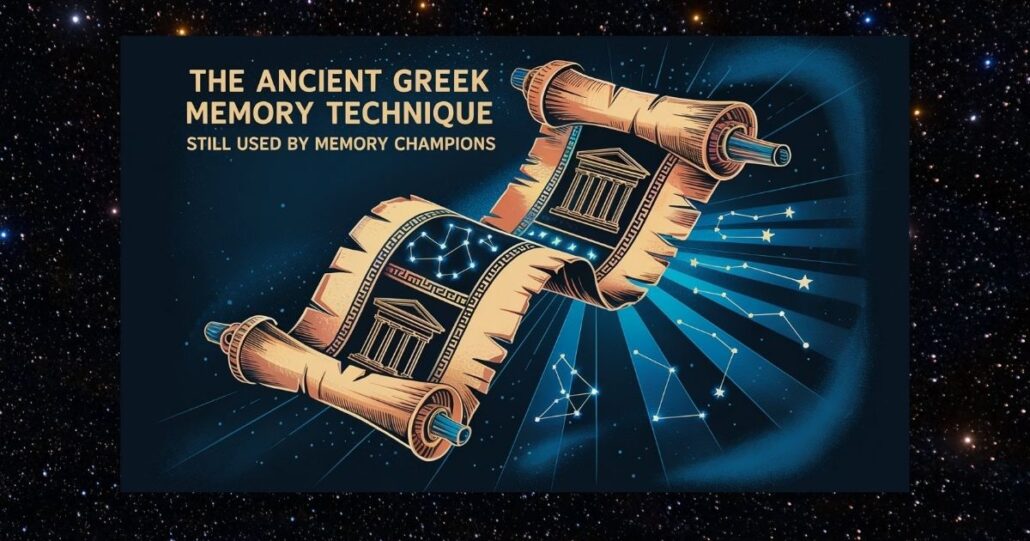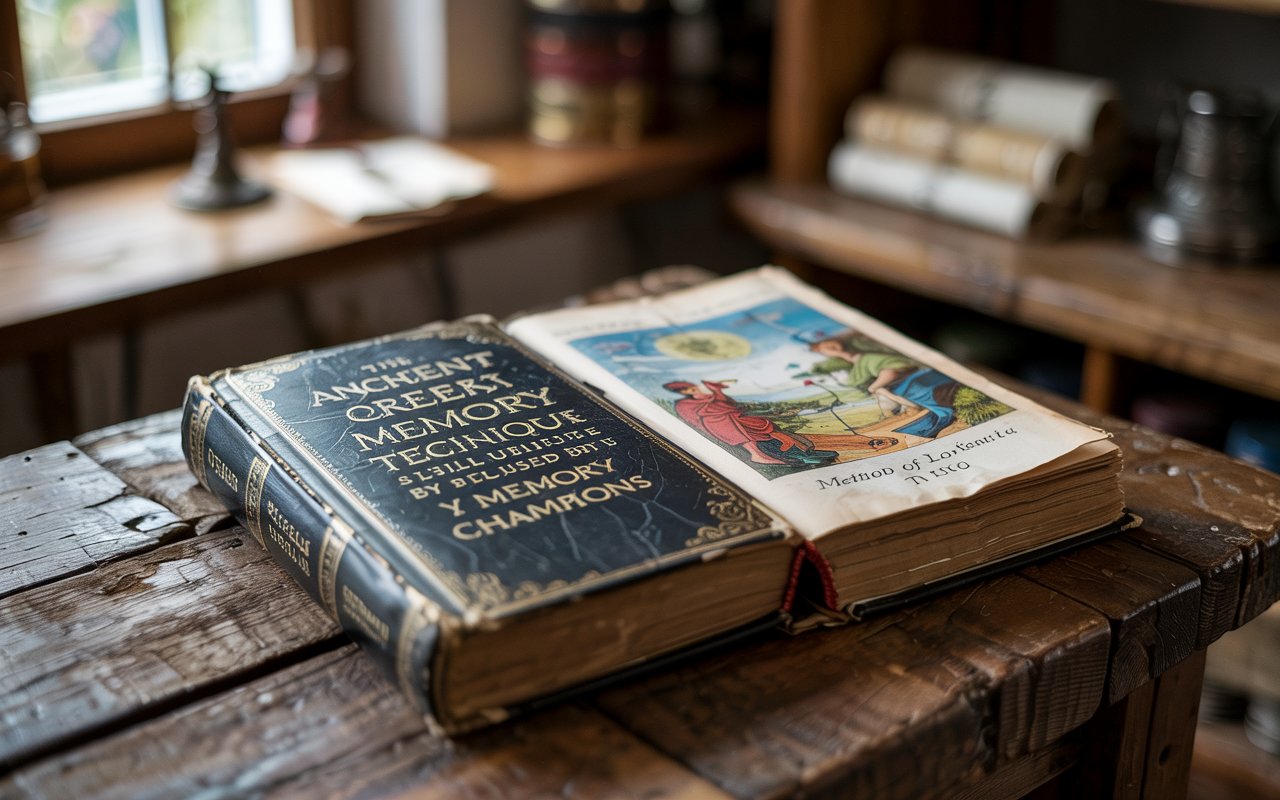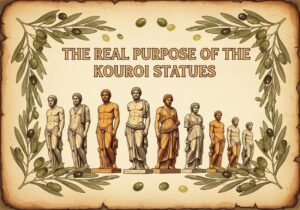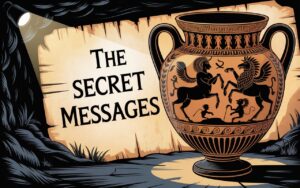The Ancient Greek Memory Technique Still Used by Memory Champions
What if you could recall an entire shopping list, speech, or textbook chapter without writing a single note? Over 90% of memory competition winners rely on a 2,500 year-old strategy that turns your mind into a 3D filing system. This approach isn’t about raw talent, it’s about hacking your brain’s natural wiring.
The method works by linking information to familiar locations. Imagine placing facts along your daily commute or stacking ideas on your bookshelves. This spatial approach helps triple recall accuracy compared to rote learning, according to University College London research.
Historical figures from philosophers to politicians used these mental frameworks to memorise epic poems and legal arguments. Today, neuroscientists confirm that visualising concepts in physical spaces activates multiple brain regions simultaneously. This creates stronger neural pathways than traditional study methods.
You’ll discover how to:
- Transform abstract data into memorable stories
- Use everyday environments as cognitive scaffolding
- Practise recall with zero flashcards or apps
The real magic lies in customisation. Whether you’re revising for exams or learning a language, this system adapts to your unique thinking patterns. Best of all? You already possess everything needed to start – no special tools required.
Introduction: The Power of Age-Old Memory Methods
Picture this: a poet survives a disaster by recalling seating positions, sparking a revolution in how we organise knowledge. This isn’t fiction—it’s the origin of mental strategies that still dominate competitive recall today.
Discovering the Legacy of Ancient Mnemonics
Legend claims Simonides of Ceos invented spatial recall after a tragic banquet. When an earthquake collapsed the hall, he visualised guests’ positions to identify remains. Modern brain scans show why this works: linking facts to locations fires up three neural regions at once.
Twenty-first-century champions use these same principles. Simon Reinhard memorises card decks in under 21 seconds, while Alex Mullen recalled 3,029 digits hourly at the 2015 World Championship. Their secret? Methods unchanged since classical times.
Why You Should Embrace Traditional Memory Techniques Today
Your brain thrives on spatial stories, not rote repetition. By anchoring information to familiar places, you create recall paths that feel instinctive. Politicians once used this for speeches; students now apply it to exams.
Neuroscientists confirm these approaches boost retention by 200% compared to modern study apps. The system adapts to your thinking style—whether you’re learning Mandarin or quarterly sales figures. Best part? You’ve already got the tools: your daily commute or favourite café becomes your mental filing cabinet.
Understanding the Ancient Greek Memory Technique
Let’s explore how a fifth-century BCE poet’s near-death experience shaped cognitive strategies still used by chess grandmasters and medical students alike. This approach turns mundane environments into mental filing cabinets through spatial storytelling.
The Banquet That Changed Recall Forever
Imagine escaping a collapsing building moments before disaster – then using that trauma to revolutionise learning. That’s exactly what happened to Simonides of Ceos. After an earthquake destroyed a packed hall, he visualised guests’ seating positions to identify remains, unwittingly creating the first method loci framework.
Why Your Brain Prefers Spatial Stories
Modern life bombards us with passwords, presentations and protocols. Yet our brains still process information best through location-based narratives, just as Roman orators did. Neuroscientists found that spaced repetition and retrieval practice work 200% better when paired with spatial anchors.
Twenty-first-century brain scans reveal why. When you mentally place facts along your jogging route or office layout, you activate the same hippocampal regions used by Simonides. This explains why world memory champions can recall 3,000 digits – they’re essentially taking neural walks through imagined landscapes.
The real lesson? Effective learning isn’t about forcing data into your mind. It’s about letting your brain do what it evolved to do – navigate spaces and remember journeys. Your local coffee shop could hold more memorisation power than any flashcard app.
Creating Your Personal Memory Palace
Ever walked through your home with your eyes closed? That instinctive familiarity forms the backbone of your first mental storage system. Start by selecting a well-known space – your childhood home or regular jogging path work brilliantly. The key lies in systematic organisation paired with playful creativity.
Step-by-Step Visualisation Process for Your Memory Journey
Begin your mental walk at a distinctive starting point – perhaps your front door or local bus stop. Move through the space in logical sequence, noting permanent fixtures like lamps or bookshelves. As you encounter each landmark, attach information using vivid, multisensory scenarios. Need to remember a client’s name? Imagine them juggling flaming pineapples on your coffee table.
Customising Rooms and Landmarks for Effective Recall
Transform ordinary spots into unforgettable memory triggers. That bland hallway becomes a gallery of animated paintings representing historical dates. Your microwave might ‘sing’ foreign vocabulary words when opened. Memory palace technique masters recommend using emotional extremes – imagine facts as shocking, hilarious or slightly surreal versions of themselves.
Practise makes permanent. Start with 10-item grocery lists, gradually progressing to complex data. Within weeks, you’ll find yourself ‘walking’ through mental landscapes to retrieve information as naturally as recalling last night’s dinner.
Enhancing Memory with Diverse Mnemonic Strategies
What if your daily commute could hold secret codes for remembering phone numbers? Civilisations worldwide developed clever systems that turn ordinary experiences into recall powerhouses. These approaches prove there’s no one-size-fits-all solution for locking information into your mind.
Incorporating Songlines and Other Age-Old Methods
Australia’s First Nations people used songlines – intricate mental maps linking landmarks to stories. Imagine recalling a 500km route through desert by associating each rock formation with survival tips. This landscape-as-textbook approach shows how physical spaces can store complex data.
Medieval scholars took a different tack. They crafted abbreviation systems so efficient you’ll find them on Roman coins from 132 AD. A single symbol could represent entire legal concepts – like emojis for 2nd-century bureaucrats.
Blending Ancient Wisdom with Contemporary Practices
Try merging old and new:
- Use Buddhist temple layouts to organise work projects
- Apply the katapayadi system (683 CE) to memorise PINs
- Channel Ars Notoria’s image-focused rituals during study breaks
These methods work because they tap into how your brain naturally operates. Whether through rhythmic patterns or spatial anchors, you’re giving information multiple ‘handles’ for easier retrieval. As one memory researcher noted: “The best systems work with your biology, not against it.”
Applying Ancient Techniques in Your Everyday Learning
Ever misplaced your keys but remembered exactly where you left them last week? That instinctive spatial awareness holds the key to upgrading your learning. While these methods won’t teach quantum physics, they’ll help organise facts like vocabulary or historical dates with remarkable efficiency.
Practical Tips for Students and Lifelong Learners
Start by converting dry information into vivid stories. Need to remember the periodic table? Imagine helium balloons lifting your kitchen table while sodium sizzles in the frying pan. Use familiar locations like your local park or favourite shop as mental storage units.
Pair these spatial tricks with rhythm and rhyme. Create catchy lyrics for foreign phrases or set important dates to a shower-time melody. The goal? Make facts unforgettable through multi-sensory connections rather than endless repetition.
Remember – these approaches work best for concrete details, not abstract concepts. Use them to nail exam dates or client names, then focus on understanding the bigger picture. With practice, you’ll find yourself recalling information as naturally as remembering the route to your childhood home.







